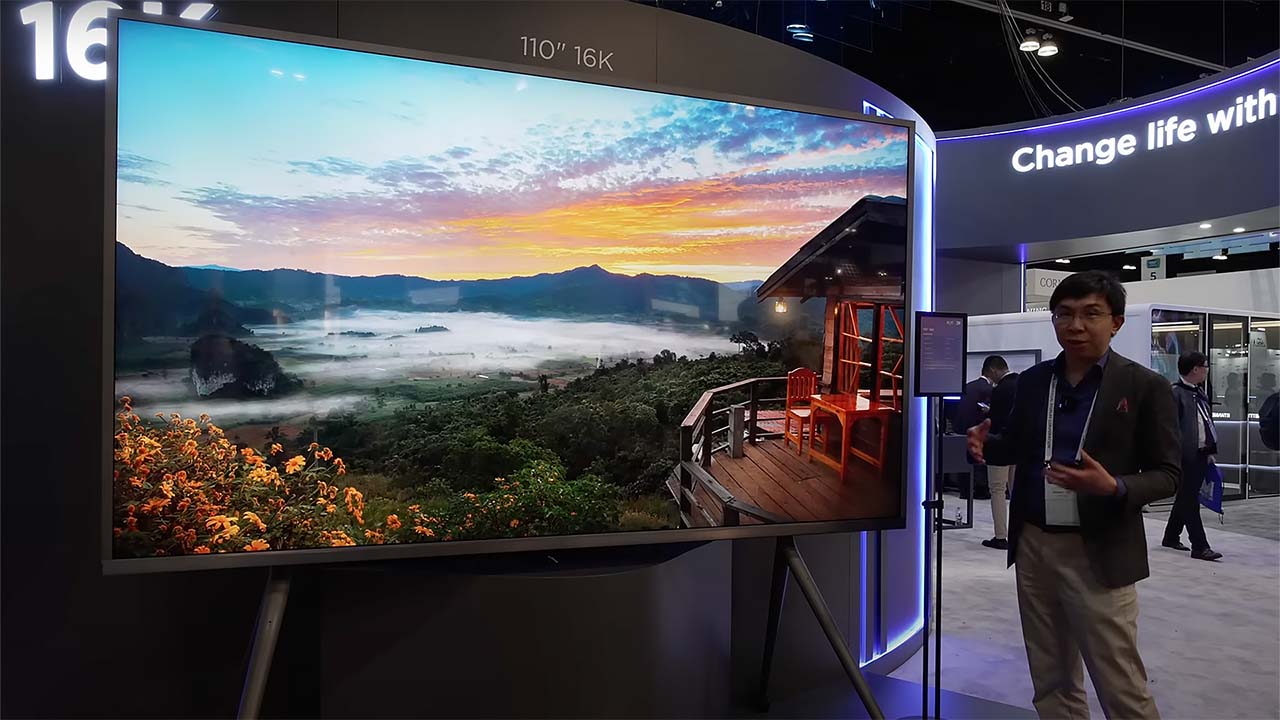
In a development that is bound to open old debates, a new 16K display has been unveiled in Los Angeles.
The new 110" display, which has been made by Chinese company, BOE, was unveiled at the Display Week trade show show in Los Angeles. If you're reading this wondering a) why on earth we need it, and b) what on earth can be played on it, you'll be in good company, since we're a bit perplexed here as well.
Currently, there's no 16K content to show on the display, so anything shown on it needs to be upscaled. In the case of the demos shown at the show, all content was upscaled by AI algorithms. It won't surprise you to learn that there are some limitations currently with the display itself. For example, its maximum brightness is 400 nits, which is much lower than the 1000 nits that Sony demonstrated in 2019, albeit with a display made from multiple panels. Its maximum refresh rate is also quite low compared with most modern displays, maxing out at 60Hz.
Do we need 16K?
If we could easily produce 16K content, what would be the advantage of such a display? Assuming we wanted to do such a thing, the big advantage is that the pixel structure is so fine that it is undetectable even with your face right up against the glass. In other words, this is about as close to analogue as it's possible for a digital image to get with current technology.
Something important to consider here, though, is that BOE is not a display manufacturer itself, instead producing displays for other companies brands. Therefore, any final television set that may or may not be produced using the technology would be made by another firm. If nothing else it's an impressive show of technology, although it is likely, as pointed out on Tom's Guide, that such products would be much more useful as informational displays than as a TV in your living room.
16K cameras do exist, such as Dalsa's Piranha3, but they generally stay firm in the speciality sector rather than as cinema cameras. The closest practical camera on the market right now is Blackmagic Design's URSA Mini Pro 12K, so would-be 16K producers aren't exactly swimming in choice.
In conclusion, this new 16K display has certainly got people talking, and no doubt the various discussions around how much resolution is enough will rage once more. Who knows, it might even settle the debate once and for all.
Tags: Technology Featured Monitors


Comments